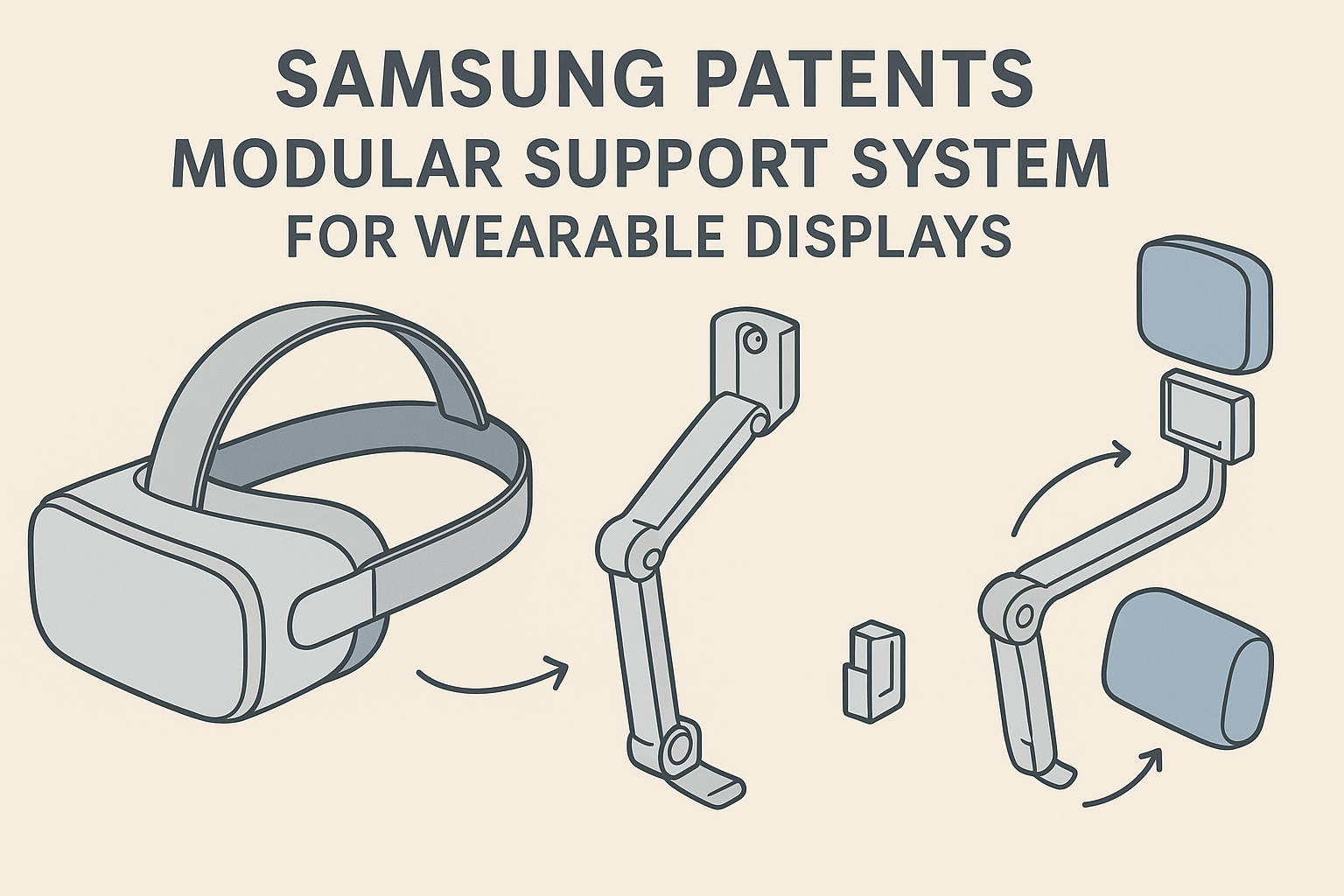Samsung has secured a new patent that could reshape the future of wearable technology. The company’s latest filing reveals a modular support system for wearable displays. The system promises improved comfort, adaptability, and longevity for devices such as AR and VR headsets.
A New Vision for Wearable Displays
The patent, published in August 2025, outlines a reconfigurable mechanical support framework. Unlike fixed designs, this system lets users swap or reposition modules such as brackets, padding, counterweights, and actuator supports. The goal is simple: make wearables easier to use, easier to repair, and more comfortable to wear.
Samsung’s design includes quick-release mechanisms using snap-locks, magnetic guides, and bayonet-style connectors. These allow users to change modules without tools. The company also highlights alignment features to ensure optical accuracy after adjustments.
How the Modular System Works
The core display remains constant. Around it, modular arms, pads, and support links can be attached or removed. Electromechanical actuators let the headset tilt, pivot, or recline. The design distributes weight more evenly across the head, reducing fatigue during long use.
Modules can also integrate sensors, microphones, or speakers. This means the same headset could support immersive gaming, enterprise training, or industrial safety tasks — all by changing modules.
Comfort Meets Customization
Samsung’s patent stresses the importance of comfort. Traditional AR and VR headsets often cause neck strain and pressure marks. By adding removable padding and counterweights, the modular system balances load more effectively.
For consumers, this translates into lightweight frames for casual media viewing and reinforced mounts for active gaming or industrial applications. For enterprises, it could mean a single device serving multiple roles across a workforce.
Broader Strategy in Wearables
This is not an isolated move. Samsung has filed a series of patents in recent months that focus on wearable adaptability. Earlier filings detailed continuous beamforming microphones, prescription lens integration, and smartglass side-arm speakers. Together, these patents suggest a long-term vision: versatile, modular wearables that adapt to user needs and environments.
Analysts believe Samsung is positioning itself against rivals in the XR (extended reality) space. By focusing on modularity, the company can reduce costs, extend product lifespans, and encourage third-party accessory ecosystems.
Why It Matters
The wearable industry faces three main challenges: comfort, cost, and longevity. A modular support system addresses all three.
- Comfort: Users get tailored fit and weight distribution.
- Cost: Replacing modules is cheaper than buying an entire new device.
- Longevity: Repairability reduces electronic waste and extends product use.
If commercialized, this approach could redefine how consumers and enterprises view wearable hardware. Instead of a single fixed device, headsets may evolve into platforms with swappable modules.
Commercial Outlook
It is important to note that patents are not product announcements. Companies often patent concepts that never reach the market. Still, Samsung’s repeated filings in this field suggest active R&D efforts. Industry experts believe a modular wearable could appear within the next few years, especially as competition intensifies with Apple, Meta, and other XR players.
Challenges Ahead
Despite the promise, challenges remain.
- Precision alignment: Swappable modules must not affect optical calibration.
- Connector durability: Fasteners must withstand repeated use.
- User hygiene: Replaceable padding must be easy to clean.
Overcoming these hurdles will be key for Samsung if it wants to bring this technology to consumers and enterprises.
The Bottom Line
Samsung’s modular support system patent is more than a mechanical innovation. It is a strategic move that signals where the company sees the future of wearables. Customization, adaptability, and sustainability are at its core.
If Samsung delivers on this vision, users could soon own a headset that transforms from lightweight smartglasses to a high-performance VR system with just a few swaps. That future may still be years away, but the blueprint is now on paper.

